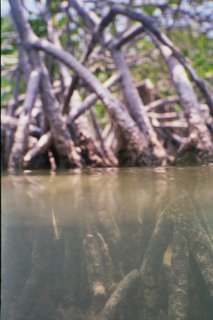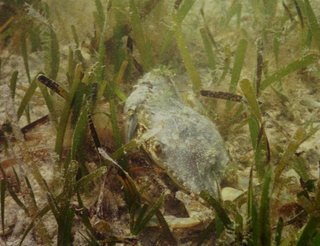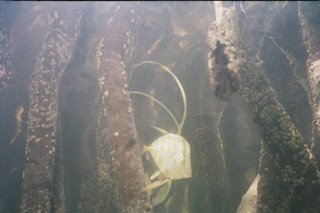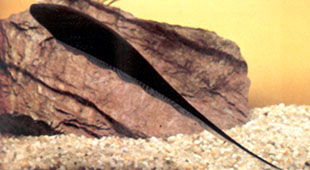
May 23 – The intentional sinking of a retired World War II-era aircraft carrier by the US Navy is being hailed as an economic boon for a Florida panhandle town still in recovery from successive hurricanes. But the safety of the "artificial reefing" program, designed to attract divers from around the world, is untested, and now hundreds of pounds of toxins have been dropped to the ocean floor.
Since the USS Oriskany was decommissioned in the 1970s, the Navy has been trying to dispose of the 888-foot warship, along with an increasing number of other retired ships, most of which contain the banned carcinogen Polychlorinated biphenyl (PCB).
On May 17, after a pre-planned explosion, the Oriskany sank in 37 minutes. It now sits 22.5 nautical miles Southeast of Pensacola, Florida.
"There’s a lot of questions here," said Kurt Davies, research director for Greenpeace, which has filed requests under the Freedom of Information Act to find out more about the Environmental Protection Agency’s process for approving the "reefing." "What we’re very concerned about is the dialogue between the Navy and the EPA about PCB waste that’s on board the Oriskany."
Davies said his group seeks information about why the EPA changed its own rules and then made an extra exception to those rules in order to allow the Navy to sink the ship.
In 1989, during the scrapping of a submarine on the West Coast, the Navy discovered that PCBs were contained in the vessel.
Subsequent testing found PCBs in the wiring, insulation, paint, gaskets, caulking, plastic and other non-metallic materials in almost all of the Navy’s ships built prior to 1976. That year, Congress banned the manufacture, processing and distribution of commercial PCBs. Research has shown that exposure to the toxin can disrupt the hormone systems of animals, and, over time, cause cancer in humans.
The discovery forced the Navy to put its plans to sink several ships on hold. Although hundreds of ships had been intentionally sunk, the EPA took a position that deliberately sinking vessels containing PCBs would violate the Clean Water Act.
According to a 2004 report by the Artificial Reef Subcommittees of the Atlantic and Gulf States Marine Fisheries Commissions, the EPA ban on the use of PCBs created a situation in which "no vessel could be cost-effectively prepared for sinking."
Efforts to have the Oriskany turned into a museum or sold off for scrap material both failed, and the Navy had decided that dismantling and recycling the ship was a "cost-prohibitive option," with a price tag of at least $12 million.
Then, in 2001, with the Navy seeing an increasing number of warships in need of disposal, the EPA’s Office of Pollution, Prevention, Pesticides and Toxics program changed the definition of reefing from "continued use" to "disposal." The language tweaking raised the acceptable level of PCBs from 2 parts per million to 50 parts per million, and allowed for the reefing of the Spiegel Grove off of Key Largo, Florida.
Even still, the Oriskany had solid concentrations of PCB’s that exceeded the legal limit, and the Navy said it couldn’t remove the remaining 700 pounds of PCBs without completely dismantling the ship.
In its 2004 environmental assessment of the proposed sinking of the Oriskany, the Navy wrote, "The purpose of the proposed action is to reduce the inactive ship inventory. The need for the action is to reduce expenses associated with maintaining ships that are pending disposal."
The EPA granted a one-time permit to allow for sinking of the Oriskany.
Aside from the risk that fish near the site will become contaminated, five threatened or endangered species of sea turtles are also found near the Oriskany’s new home. Davies pointed out the irony that Florida’s citizens and legislators fight one form of pollution, but some welcome a second with open arms.
"In Florida, you’ve been defending [the environment] against oil rigs – this very part of the Gulf of Mexico – for fear of pollution on your beaches in Florida," Davies said. "This is another case of a pollution source being introduced into the system."
Greenpeace says it is concerned that economics may have trumped health and safety in the approval process. Florida’s application to become the Oriskany’s new home had to compete with proposals from Mississippi and Texas, as well as a joint bid by Georgia and South Carolina.
The sinking of the Oriskany is expected to bring in millions of dollars every year to Escambia County, and the effects are already being seen. Speaking to The NewStandard two days after the Oriskany sank, Jim Phillips, at the Pensacola dive shop MBT Divers, said his business has been getting non-stop calls from people seeking to make reservations to dive the site.
"We never really made it on the map as far as being a dive destination," Phillips said. But he predicted that would change, as one of only three sunken aircraft carriers in the world now sits on the ocean floor only an hour’s boat ride from shore. "Now that the Oriskany's here, that will put us probably close to the top."
Phillips told TNS that the diving community was heavily involved in helping bring the Oriskany to the Pensacola area.
"We were very active," Phillips said. "Personally, it consumed pretty much every day for the last almost three years."
In their 2003-04 annual report, the Pensacola Bay Area Chamber of Commerce credits the area’s Convention and Visitors Bureau for playing an instrumental role in seeing Pensacola chosen as the sinking site. Phillips said those involved in the roughly 30 dive shops and dive boat operations served as information sources for the EPA and other government agencies.
"If environmental people had questions, if we had the opportunity to help resolve some of the issues, we did," Phillips said. "We did lots of communicating with legislators and the different politicians at the different levels involved."
For its part, the EPA denies interference by locals, politicians or the Navy in its decision-making process. "There is a feisty competition any time there is one offered for reefing," acknowledged Mark Fite, chief of the EPA's Children’s Health, Lead and Asbestos Management Section of Region 4.
But Fite insisted the approval process was thorough. "We weren’t pushed into any decision," he told TNS. "This was a decision that EPA has the sole authority to make, and we’ve done that."
Fite said the State of Florida is developing a program to test PCB levels in fish caught in the vicinity of the ship, and that the monitoring plan "will go on for a number of years."
Laura Niles, spokesperson at the EPA’s Region 4 office, added that any fish caught with PCB levels of more than two parts per million will trigger further assessment. Niles also said the standards used for the Oriskany will not apply to future reefings and that the EPA is in the process of developing a national reefing approval process.
While Greenpeace is not against all artificial reefing projects per se, Davies said, the group is concerned that the Navy has more sinkings planned. "We feel like they’re greasing the path for a really quick fix on the problem of ship disposal that [carries] uncertain risks."
Lad Akins, the executive director of the Reef Environmental Education Foundation (REEF), a Key Largo-based group that collects data and educates the public on marine life, said there is "considerable debate" among those in his field about the merits of sinking giant ships. "I have concerns, and I think that anybody who says they don’t, should have," he said.
Despite his belief that the pollution from the Oriskanys’ innards will not be an immediate problem, Akins says there are questions that remain unanswered. "What happens when you get a severe hurricane?" he asked. "What’s it going to do to that structure, and what’s it going to look like in 50 or 100 years?"
In a 2004 environmental assessment of the Oriskany, the Navy quoted a 1997 Gulf States Marine Fisheries Commission document, which says vessels have life spans as artificial reefs that may exceed 50 years. But Akins points out that "almost anything you put in the ocean is gonna break down if you give it enough time, and certainly that ship will break down someday."



















